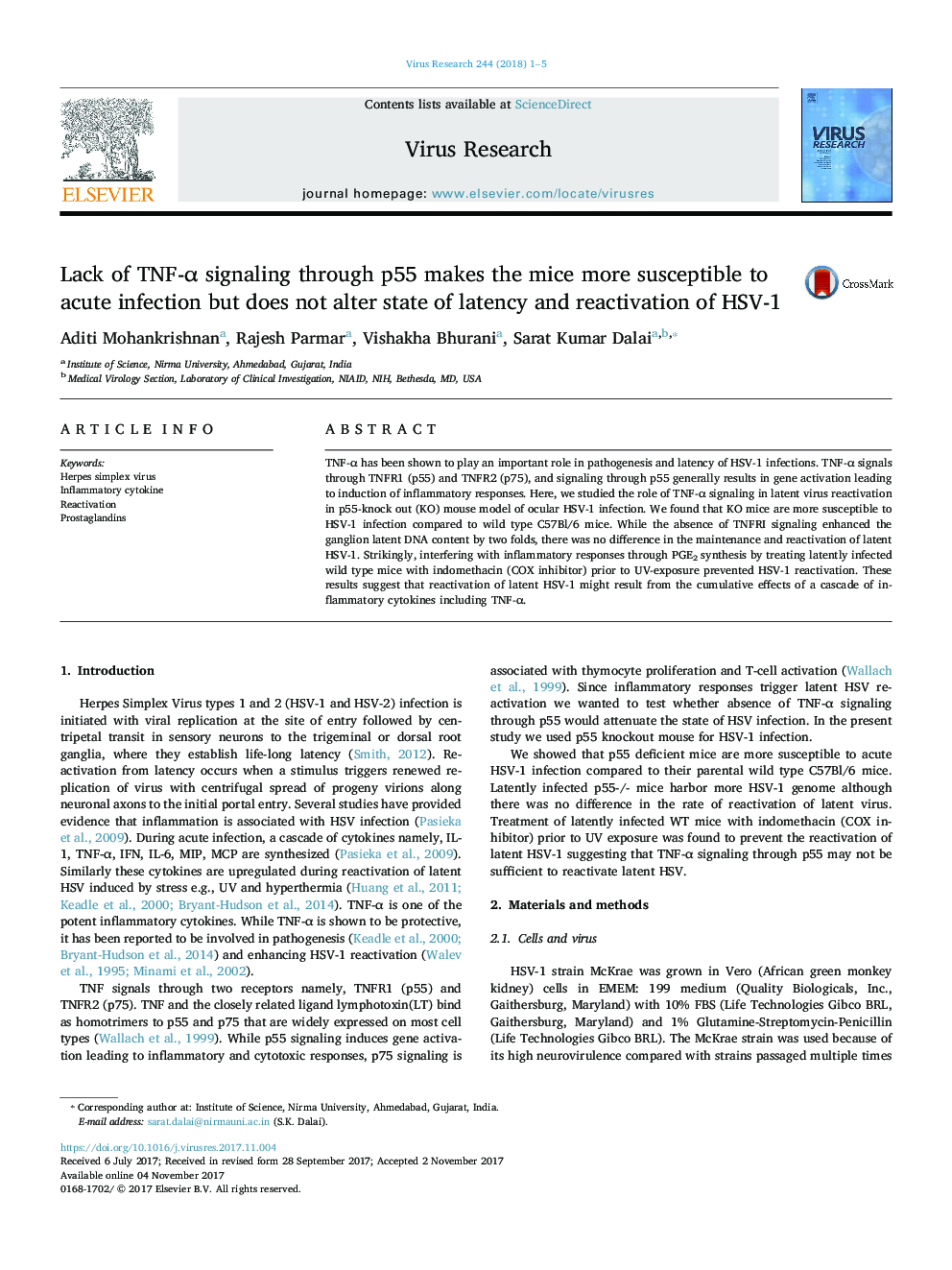| کد مقاله | کد نشریه | سال انتشار | مقاله انگلیسی | نسخه تمام متن |
|---|---|---|---|---|
| 8751955 | 1594313 | 2018 | 5 صفحه PDF | دانلود رایگان |
عنوان انگلیسی مقاله ISI
Lack of TNF-α signaling through p55 makes the mice more susceptible to acute infection but does not alter state of latency and reactivation of HSV-1
دانلود مقاله + سفارش ترجمه
دانلود مقاله ISI انگلیسی
رایگان برای ایرانیان
کلمات کلیدی
موضوعات مرتبط
علوم زیستی و بیوفناوری
ایمنی شناسی و میکروب شناسی
ویروس شناسی
پیش نمایش صفحه اول مقاله

چکیده انگلیسی
TNF-α has been shown to play an important role in pathogenesis and latency of HSV-1 infections. TNF-α signals through TNFR1 (p55) and TNFR2 (p75), and signaling through p55 generally results in gene activation leading to induction of inflammatory responses. Here, we studied the role of TNF-α signaling in latent virus reactivation in p55-knock out (KO) mouse model of ocular HSV-1 infection. We found that KO mice are more susceptible to HSV-1 infection compared to wild type C57Bl/6 mice. While the absence of TNFRI signaling enhanced the ganglion latent DNA content by two folds, there was no difference in the maintenance and reactivation of latent HSV-1. Strikingly, interfering with inflammatory responses through PGE2 synthesis by treating latently infected wild type mice with indomethacin (COX inhibitor) prior to UV-exposure prevented HSV-1 reactivation. These results suggest that reactivation of latent HSV-1 might result from the cumulative effects of a cascade of inflammatory cytokines including TNF-α.
ناشر
Database: Elsevier - ScienceDirect (ساینس دایرکت)
Journal: Virus Research - Volume 244, 15 January 2018, Pages 1-5
Journal: Virus Research - Volume 244, 15 January 2018, Pages 1-5
نویسندگان
Aditi Mohankrishnan, Rajesh Parmar, Vishakha Bhurani, Sarat Kumar Dalai,